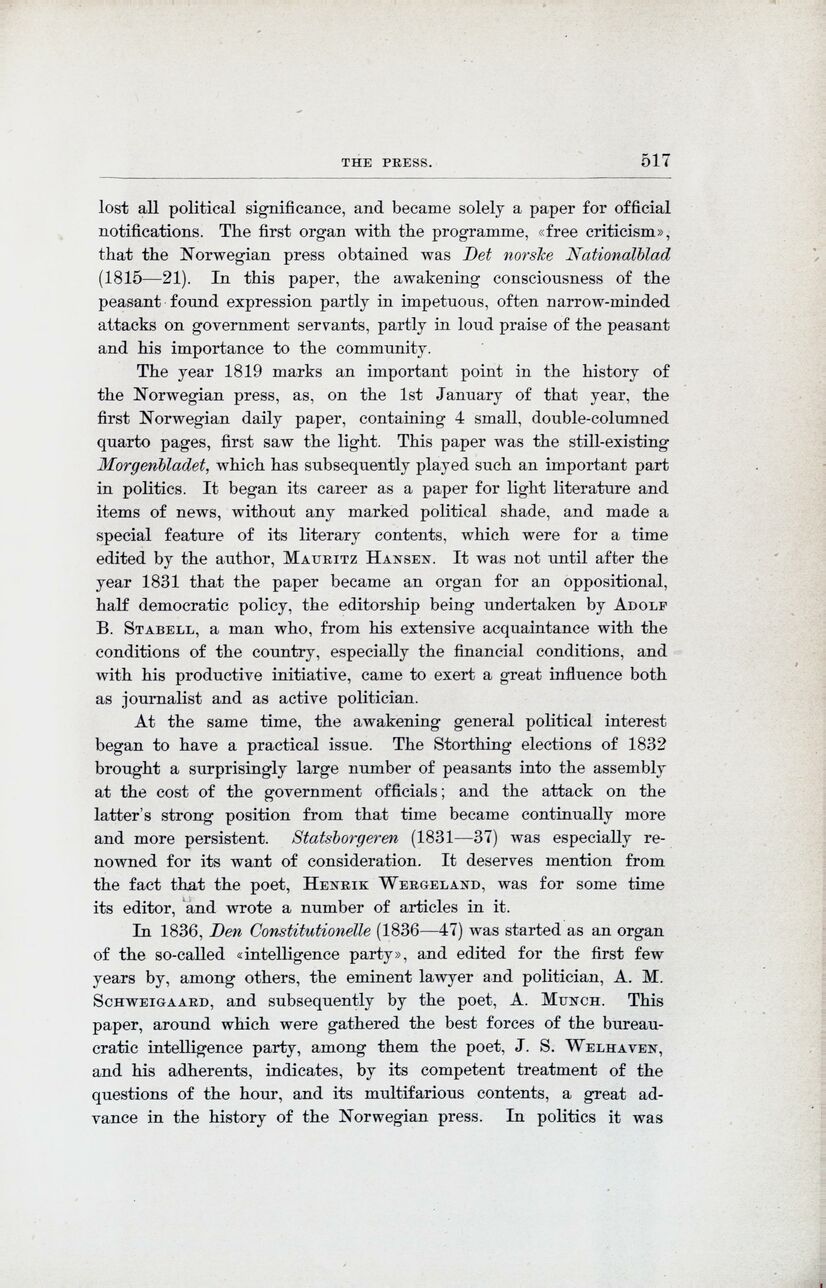
Full resolution (JPEG) - On this page / på denna sida - Press, by Karl Fischer

<< prev. page << föreg. sida << >> nästa sida >> next page >>
Below is the raw OCR text
from the above scanned image.
Do you see an error? Proofread the page now!
Här nedan syns maskintolkade texten från faksimilbilden ovan.
Ser du något fel? Korrekturläs sidan nu!
This page has been proofread at least once.
(diff)
(history)
Denna sida har korrekturlästs minst en gång.
(skillnad)
(historik)
lost all political significance, and became solely a paper for official
notifications. The first organ with the programme, «free criticism»,
that the Norwegian press obtained was Det norske Nationalblad
(1815—21). In this paper, the awakening consciousness of the
peasant found expression partly in impetuous, often narrow-minded
attacks on government servants, partly in loud praise of the peasant
and his importance to the community.
The year 1810 marks an important point in the history of
the Norwegian press, as, on the 1st January of that year, the
first Norwegian daily paper, containing 4 small, double-columned
quarto pages, first saw the light. This paper was the still-existing
Morgenbladet, which has subsequently played such an important part
in politics. It began its career as a paper for light literature and
items of news, without any marked political shade, and made a
special feature of its literary contents, which were for a time
edited by the author, Mauritz Hansen. It was not until after the
year 1831 that the paper became an organ for an oppositional,
half democratic policy, the editorship being undertaken by Adolf
B. Stabell, a man who, from his extensive acquaintance with the
conditions of the country, especially the financial conditions, and
with his productive initiative, came to exert a great influence both
as journalist and as active politician.
At the same time, the awakening general political interest
began to have a practical issue. The Storthing elections of 1832
brought a surprisingly large number of peasants into the assembly
at the cost of the government officials; and the attack on the
latter’s strong position from that time became continually more
and more persistent. Statsborgeren (1831—37) was especially
renowned for its want of consideration. It deserves mention from
the fact that the poet, Henrik Wergeland, was for some time
its editor, and wrote a number of articles in it.
In 1836, Den Constitutionelle (1836—47) was started as an organ
of the so-called «intelligence party», and edited for the first few
years by, among others, the eminent lawyer and politician, A. M.
Schweigaard, and subsequently by the poet, A. Munch. This
paper, around which were gathered the best forces of the
bureaucratic intelligence party, among them the poet, J. S. Welhaven,
and his adherents, indicates, by its competent treatment of the
questions of the hour, and its multifarious contents, a great
advance in the history of the Norwegian press. In politics it was
<< prev. page << föreg. sida << >> nästa sida >> next page >>